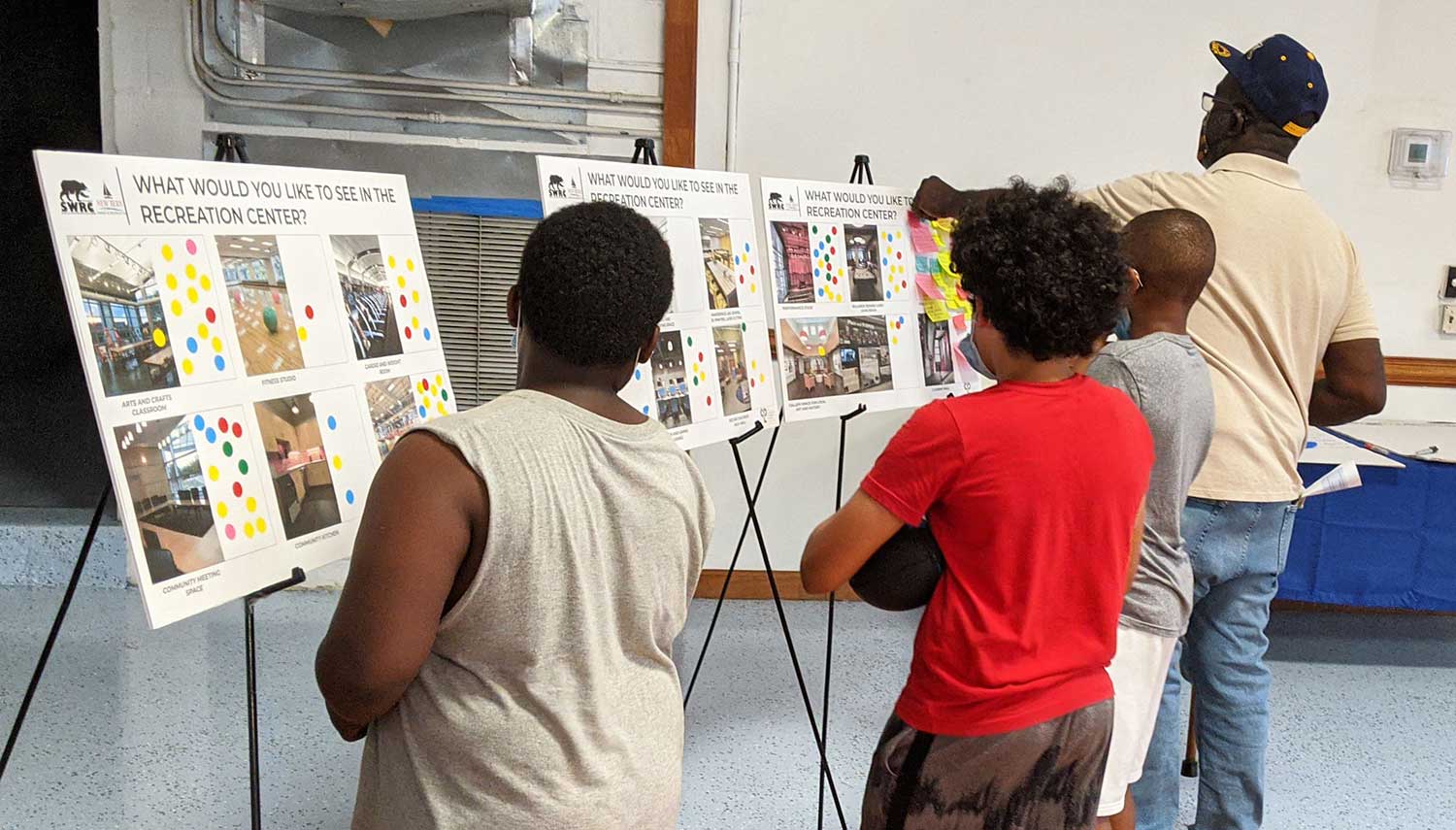Share This Story
Diverse communities offer a rich tapestry of individuals.
Economics, ethnicities, religions, languages and lifestyles are just a few of the unique threads that create the fabric of these neighborhoods.
As designers, we enjoy working with people of all ages, backgrounds and cultures because we relish in the ambitious opportunity to create designs that ultimately serve everyone in a community. Our approach to community-based projects often leverages creative public engagement strategies to help us better understand each neighborhood as well as build trust and consensus around designs that will enrich people’s lives.
However, efforts to develop a strong consensus for these types of projects require extensive outreach that prioritizes inclusivity and builds faith to drive a united design forward. Our best practices for accomplishing this include:
1. All community participants should feel welcomed and deeply valued.
Efforts to include every stakeholder should be made early and earnestly by giving everyone a seat at the table, encouraging honest and open dialog, and recognizing that every person communicates their feelings and ideas in different ways. As soon as these relationships commence, trust can begin.
2. Work to discover what project success means to each and every stakeholder.
Surprisingly, harmony can be struck through a shared meaning or idea, even if end users are different. Identifying and developing the heart and soul of a project can powerfully unite all.

Visual boards displayed at a public engagement event to help identify the community’s wants and needs for a new recreation center.
3. Practice clear and consistent communication throughout every stage of a community project.
In groups where trust is already fragile, conflicting objectives, missing information, or vague interpretations can often disrupt or in some cases, completely de-rail progress on a community project. Maintaining a commitment to clarity and transparency helps gain consensus and grow confidence in all design decisions.
4. Remain impartial and responsible.
All public engagement should be completely free from alternative agendas; political, personal, or any other motives should never be present. Only candor is acceptable regarding your role and how citizen input will be used in decision-making or implementation. If this rule goes unfollowed, trust may dissolve or completely slip away.
5. Trust requires everyone to work from a mutual understanding.
Faith in the project team and the process will wane if participants feel that information is not equitably shared. All information should be consistently presented through a variety of means. Explanatory boards, video and graphic presentations, and web landing pages are just a few tools that can help communicate essential information to the community at large throughout the duration of a project.

Printed survey of visual preferences given to members of the community during a public presentation of a new community streetscape project.
Trust is an indispensable component of any successful relationship. To develop, it requires commitment to word and deed. This rule is never truer when approaching project development in diverse communities.
Firmly established and carefully nurtured, trust can build a solid consensus for community assets that strongly enrich, connect and enhance a unique medley of lives through one lasting common thread.
